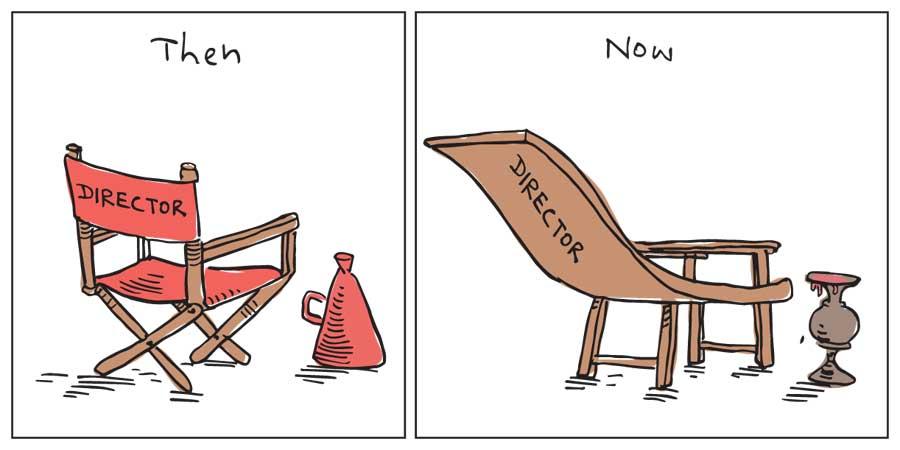Reply To:
Name - Reply Comment

Three veteran artistes who were featured prominently in Sinhala tabloid magazines recently were Sanoja Bibile, Sathischandra Edirisinghe and the evergreen Ravindra Randeniya. These three artistes are still in demand. But they have their reservations regarding where the local cinema and the tele drama industries are heading.
The biggest concerns by these seasoned artistes is that youngsters are getting into the industry without doing much of a study on cinema. It’s not that Sri Lanka offers opportunities for budding artistes to undergo an intensive, comprehensive and practical theory course in cinema at a state run university. But actors of yesteryear did come out of what could be best described as no system. The seasoned veterans affirmed that they as juniors watched the seniors before them and grew through such experiences. Bibile who has had a long and illustrious career in the cinema will vouch for this. Artistes of yesteryear were willing to play diverse roles. Bibile could play both mother and lover when she was quite young. The attitude portrayed by them was that artistes were willing to think of the overall cinematic production first. Today’s artistes want to play the role of the ‘lover’ and think about themselves. Duleeka Marapana could be an exception and has the ability to teach the young artistes a lesson or two in dedicating oneself to a challenging role that’s given to and artiste.
The youngsters today must do a study of local cinema. It’s a must just to know how the industry shaped from studio shooting to the set.
Starting from ‘Kadawuna Poronduwa’ (1947) Sri Lanka’s cinema unfolded many chapters going through ‘Rekawa’ (1956), ‘Gamperaliya’ (1964) and also ‘Sath Samudura’. Aristes of the past were rarely seen on the street and never in advertisements; hence they were able to maintain their demi god status.
Still some of the veterans in the industry vouch that they can help lift the flagging fortunes of the local cinema if they are roped in. But the problem that blocks their presence and a return to the set for new productions is that they are not paid as highly compared to the remuneration received by the budding artistes.
"Still some of the veterans in the industry vouch that they can help lift the flagging fortunes of the local cinema if they are roped in. But the problem that blocks their presence and a return to the set for new productions is that they are not paid as highly compared to the remuneration received by the budding artistes"
Recently it was good to see Ravindra Randeniya being featured in a Sinhala tabloid. He spoke about his 51 year career in cinema. However he laments that the industry nor the government has felicitated the milestone he has passed in cinema where he has dedicated a half century from his life years to prop the industry as an artiste.
He remembers that there were 74.5 million cinema viewers in Sri Lanka in 1977 when the island’s population in comparison was just 18 million. The cinema viewership simply rose because at that time people had a refined taste for cinema and each viewer watched a single movie as much as three to four times.
However at present technological progress in cinema is much sought after above anything else hence the decline in the depth of cinematic productions. The lack of affluent and willing producers also has added to the challengers in the industry.
The veterans in the industry point out that the youth in the cinema industry are hellbent on maintaining their physiques and faces and don’t do their best in roles that demand an emotional performance. Just the other day this writer saw on facebook a saying accompanied by a telling visual. In it we see a cameraman sitting on the doorway of a helicopter and taking great pains to film a scene; which perhaps needs a fine eye and a calm and collected mind to capture what’s happening. The caption states that the cameraman and the helicopter can be replaced any time by a drone which will have a fixed-in camera. This perhaps best explains what has happened to the local cinema industry.